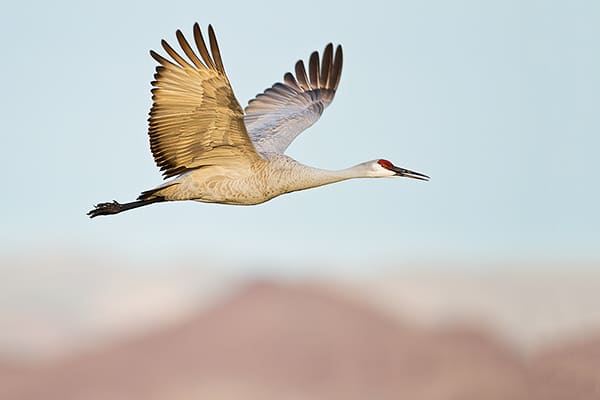I realize the east coast of the US is reeling from the latest of many severe winter storms this winter. But here in SW Colorado spring is in the air. It has been unseasonably warm with snow pack far below normal.
The ski resorts are hurting and exceptionally dry conditions may cause issues later this year. But for now, the weather is gorgeous and I am not complaining.

Sandhill Crane Migration
Of course there is still plenty of potential winter weather ahead. But there are subtle signs of spring. Having spent most of my adult life in Nebraska, one of the first signs of spring is the arrival of sandhill cranes on the Platte River. Reports from the field indicate the spring crane migration has indeed begun and a few “early birds” are already using the Platte River for feeding, resting, and roosting. Their numbers won’t peak for several weeks but excitement is in the air.
Many are surprised by the tremendous birding opportunities in Nebraska each spring. In addition to 500,000 sandhill cranes, 7 to 9 million ducks and 3 to 5 million geese use the central Nebraska flyway in February, March and April. In addition, at least 250 species of birds have been observed there, including endangered species such as whooping cranes, least terns, and piping plovers.

Prairie Chicken Mating Ritual
Another notable Nebraska spring ritual is the mating season of the Greater Prairie Chicken. Every wildlife photographer and birder must witness this amazing spectacle at least once. These grassland birds have become rare due to habitat loss. The Nebraska Sandhills are one of the last remaining places where theyare plentiful.
Greater Prairie Chickens do not migrate. They spend their entire lives within a relatively small area of several hundred acres where all their needs of food, cover and water are met. They are territorial birds and defend their booming grounds from competing prairie chickens, sharp-tailed grouse, ring-necked pheasants and other assorted intruders.
These booming grounds are where males perform their eccentric dance displays in hopes of attracting eligible females. They inflate orange air sacs on their neck, stomp their feet, and snap their tails to the sound of a low frequency “booming” call which can be heard for miles. When not dancing, males fight for territory on the lek, with one or two males emerging as dominant, and subsequently performing the majority of the mating.
I’ve been shooting this springtime ritual in Nebraska for many years and it never gets old. Once again this year I’ll be traveling back to my home State in March for my Ancient Migration and Exotic Birds of the Prairie photography workshops.
Spring is definitely just around the corner. I can tell because I’ve begun thinking about and planning my own annual spring migration back to Nebraska.
Frank Comisar
Frank Comisar is a nature photographer who loves to help others make beautiful photographs. His photography interests are varied and range from landscapes to wildlife. He shoots landscapes, wildlife, and nature for the purpose of capturing a moment in time that when revisited, portrays the natural beauty of the places visited and the creatures that live there. His goal is to not merely provide a visual and technical documentation of the scene in front of the lens. Rather, it is to render the scene in an artistic and creative way that not only provides context to the image, but also captures the feeling and essence of the moment.
Leave a Reply